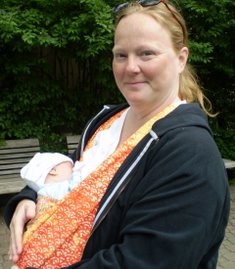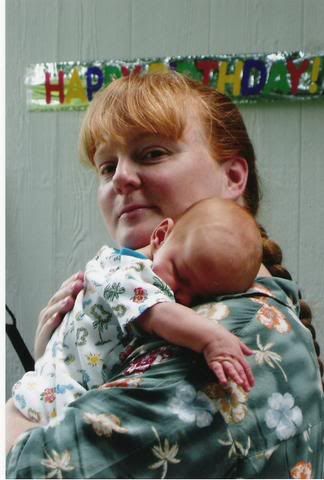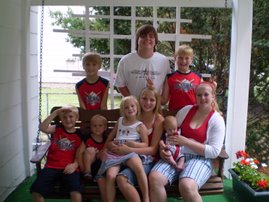When: Sunday, January 28 3 PM
Who: ALL HOMESCHOOLERS (preschool to teens and anyone in between)
Cost: None
Where: Jr. OUAM Hall in St Bernard (directions sent upon RSVP)
Number of participants: Limited to 36 children
RSVP to: Deanne
What to Bring: Your project and a dish to share (See * below)

Each child picks their own topic, creates their own hypothesis and presents their conclusion. How they present their project is completely up to them. They can bring the actual experiment, write a report (on the experiment), make a display board, a photo montage, a video. The possibilities are only limited by your imagination. The great thing about this opportunity is that any age child can participate and present their research to the best of their abilities. No competing! Certificates of participation (and possibly ribbons) will be given to each participant. The hall has plenty of electrical outlets so feel free to use one (or more)!
Projects can be set up from 3-3:30 PM at which time we will give each participant a chance to present their project to the group. At the conclusion of the presentations, certificates (and possibly ribbons) will be given to the participants. Similar events have run until about 5 PM in the past.
*Please bring a nut-free snack to share. No popcorn please! It might be fun to try to tie your treat to the subject of your science fair project, for example if you did can you predict volcanic eruptions as your project, a volcanic chocolate cake might be a great touch! Plates, silverware, drinks, cups, and napkins will be provided.
What is a Science Project?
1. Choose a problem to solve.
2. State your problem as a specific question.
3. Research your problem.
4. Form a hypothesis.
5. Plan your project.
6. Set up a time schedule.
7. Make a list of all the materials you will need.
8. Collect all your materials.
9. Conduct your experiments, several times.
10. Record the data.
11. Organize the data in a more orderly form.
12. Draw conclusions from the data.
13. Prepare your report, graphs, drawings, and diagrams.
14. Construct your science fair display.
What is not a Science Project?
1. a collection of related or unrelated objects
2. a list of things
3. a report not supported by data or an experiment
4. a model, illustration, or piece of equipment unrelated to an experiment
Here are a couple of links you might want to check out:
http://school.discovery.com/sciencefaircentral/scifairstudio/handbook/scientificmethod.html
http://www.elmers.com/sciencefair/index.asp
http://www.historyforkids.org/learn/science/logic.htm
What GREAT fun! 17 kids showed up with projects (the count would have been higher if 4 of the Riesenberg kids hadn't had previous commitments....the science fair was postponed from last weekend). Another family came (and brought some delicious bread) just to look at the projects. The kids were SO PROUD to present their projects.
Grant did his project on dice and probability. Poor Jacob tried 3 different projects with yeast and could only get one to work (and it only worked a little, not the dramatic results we had hoped for!). But he then conducted a project about why you shouldn't buy dented cans and it worked PERFECTLY! Sophie did a project about polymers (she made slime) and Will was her trusted assistant!
Here is the report from Grant's project:
Abstract
Why I chose this project is I wanted to know what are the most common sums of 2 dice. How Idid this was I rolled 2 dice and found out the most common sums. Why I picked this kind of a project is because math is fun.
Hypothesis
I think 7s are going to come up the most often as the sum. I think the number 12 will come up the least.
Materials
1) Data sheets
2) 2 dice
3) A table
4) A pencil or pen
Procedure
1) I rolled the dice
2) I recorded the sum of the digits
3) I repeated that 200 times
4) I graphed the results
Purpose
To figure out what are the most common sums of 2 dice.
Research
What is probability?Probability is a kind of math that deals with the laws of chance. It is used to predict the mostlikely outcome of uncertain events. Such as A is more probable than B. Or that getting a king ofspades in a normal deck of cards is less probable than getting a ace or a queen of spades which meansyou will have a better chance of getting a queen or an ace than of getting a king (meaning if I wanteda queen or an ace, and either one would do, I would have more of a chance of getting one or the othermore than a king). Or say I needed a 3, 4, 5, or a 6 to win my dice rolling game, but if I got a 1 or a2 I would lose. What’s the probability of getting a 3,4, 5, or a 6? It’s 4/6, because out of 6 possibilities,4 of them are winners, and it's only 2/6 of getting a 1 or a 2 because only 2 of the 6 possibilities arelosers.
Where is Probability used?It is used in insurance and also in physics. Insurance companies have to use it to calculate howmuch they charge their customers. How they do it is if they calculate that a car has a 10% chance ofgetting wrecked then they charge 10 people 1/10 of the value of the car so they can pay for the one carthat gets wrecked. It’s also used in predicting the weather. They use probability to tell us what wouldprobably happen tomorrow and next week. Such as what is the chance of snow on Tuesday?
How long it took to do the Experiment
I rolled 2 dice and I think that is the perfect number of dice to roll if you’re doing this experiment. For me it took about30 minutes. I rolled dice 200 times. If you do it twice compare the results, see how close they are, and if you totally got weirdresults you might have done something wrong.
Possibilities with 2 dice
There are 36 possibilities with 2 dice. They are: 1 and 1, 1 and 2, 1 and 3, 1 and 4, 1 and 5, 1 and6, 2 and 1, 2 and 2, 2 and 3, 2 and 4, 2 and 5, 2 and 6, 3 and 1, 3 and 2, 3 and 3, 3 and 4, 3 and 5,3 and 6, 4 and 1, 4 and 2, 4 and 3, 4 and 4, 4 and 5, 4 and 6, 5 and 1, 5 and 2, 5 and 3, 5 and 4,5 and 5, 5 and 6, 6 and 1, 6 and 2, 6 and 3, 6 and 4, 6 and 5, and 6 and 6. And there are fewer sumsthan possibilities. The sums are, 2, 3, 4, 5, 6, 7, 8, 9, 10, 11, and 12. There are only 11 sums.
Predict Probability?
You can calculate probability and probability can be used to predict events. How probabilitypredicts is it gives you a general view of what might happen. Like if I wanted to know what theweather is going to be like tomorrow, I could watch the Weather Channel to see what might happen,or I could look at the newspaper in the morning. Each uses probability to get what it might betomorrow. A way they do this is they use old records to find out what it was like this time of year lastyear. Also they send up little weather balloons that go really high in the sky and report on things liketemperature, humidity, and wind speed. In fact if I am correct 200 weather balloons go up everyhour. Satellites also send down reports that are used to calculate the probability of the kind of weather.
How do you test out probability?
A couple simple ways of testing probability are flipping a coin, rolling dice, or picking from ahand of cards. I’ll show you how to do the dice experiment. How you would do it is get a die and rollit 100 or 200 times. What’s the probability of getting a 6 on the die any time you roll it? It’s 1/6 justlike for 1, 2, 3, 4, and 5, because there are six sides on the die and each one is equally likely to come up.
How many Sums?
How many sums of 5 are possible with 2 dice? 1 plus 4, 2+3, 4+1, and 3+2 are the four ways toget five. Although 4+1 and 1+4 look the same, as well as 2+3 and 3+2, they are still 2 differentpossibilities.
Observations and Results
Of the possible combinations there are 36 possibilities as shown in the chart below. Howeverthere are only 11 sums, because there is more than one way to get some of the sums. So the probabilityof getting a 2 is 1/36 because as shown in the chart below there’s only 1 combination that adds up to2. But the probability of getting a 3 is 2/36 because there are 2 different combinatons that add up to3. In this way, by counting how many times a sum is shown on the chart, and dividing by 36, youcan find the probability of getting that sum. So the probability of getting a 2 is 1/36 (2.8%), 3=2/36(5.6%), 4=3/36 (8.3%), 5=4/36 (11.1%), 6=5/36 (13.8%), 7=6/36 (16.7%), 8=5/36 (13.8%), 9=4/36(11.1%), 10=3/36 (8.3%), 11=2/36 (5.6%), and 12=1/36 (2.8%). The sum of all the probabilities is 1 or100%. It is 100% because you have to get something on the chart!
I rolled the dice 200 times. I got the following data for the different sums, which is shown on thegraph. I got a sum of two 6 times (3%), a sum of three 10 times (5%), a sum of four 12 times(6%), a sum of five 22 times (11%), a sum of six 25 times (12.5%), a sum of seven 44 times (22%), a sumof eight 20 times (10%), a sum of nine 20 times (10%), a sum of ten 29 times (14.5%), a sum of eleven 8 times(4%), and a sum of twelve 4 times (2%).
Conclusion
I concluded that my hypothesis was right. 7s came up the most. I was right on the part that 12s would come up the least. Also 2s, 3s, 10s and 11s did not come up not very many times.
I decided to take the project one step further and tried it with 2 20-sided dice. I guessed that 20 would come up the most and I was right.











No comments:
Post a Comment